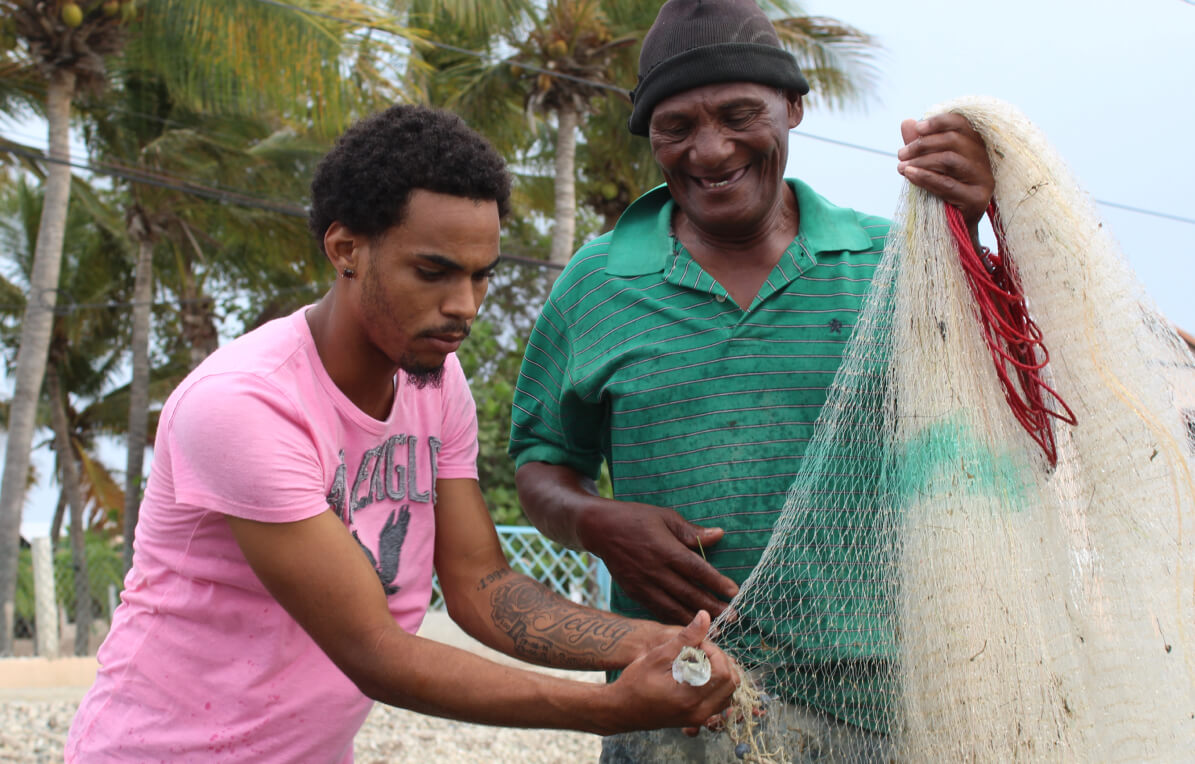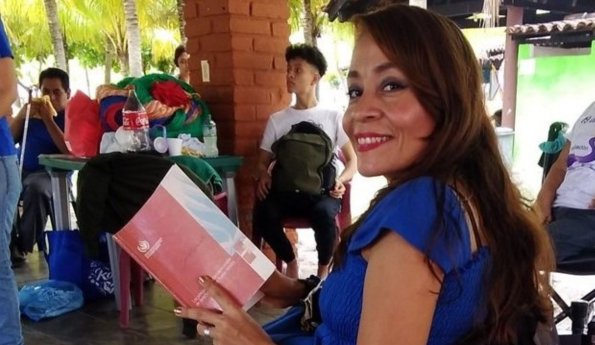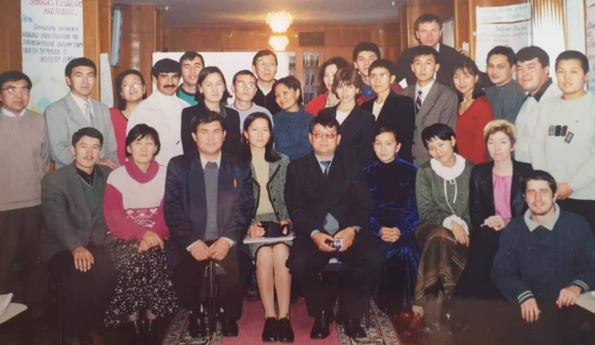As Counterpart’s Social Sector Accelerator prepares to present at the Central America Donors Forum annual conference, we reviewed global giving trends, with a particular focus on giving to non-profit organizations in Central America. According to Giving USA’s report on charitable giving in 2018, American individuals, bequests, foundations and corporations gave an estimated $427.71 billion to U.S. charities. In contrast, total giving to international affairs was $22.88 billion in 2018, a mere fraction of the total.
Although small, international giving is growing. In The State of Global Giving by US Foundations: 2011 – 2015 the Council of Foundations and Candid found international giving by US foundations grew by 29% over the four year period of the study. While international giving is at an all time high, just 12% of international grant dollars from U.S. foundations went directly to organizations based in the country where their programs were implemented. When it comes to giving to charities working abroad, Sub-Saharan African receives the most at 25.4% with Latin America receiving 7.7%.
If we take a closer look at US foundation giving to Latin America, we find:
-
Between 2011 and 2015, of the 2.7 billion in US foundation dollars that went to Latin America, 20.2% (547.2 million) went directly to organizations in Latin America.
-
Over the same period 196.8 million went to organizations working specifically in El Salvador, Guatemala and Honduras.
-
No countries in Latin America make the top 10 by recipient location. This means that more funding went directly to organizations working in Latin American but based outside the region.
-
The majority of funding directly to organizations in Latin America went to organizations in Brazil and Mexico. Mexico received 29% of the funding for Latin America. This leaves 71% for another 19 countries.
So, what gives (or in this case, doesn’t)? Why is the amount of funding given directly to local organizations so small? (And Latin America is not unique as a region – 16.6% Asia, 10.4% Sub-Saharan Africa and 4.5% Caribbean – was given directly to organizations based in these respective countries). Back in 2015 our good friend and colleague Danny Sriskandarajah shared in a Guardian article the 5 reasons donors give for not funding local NGOs directly. Not much has changed in the last 4 years, so we wanted to revisit the conversation and propose new actions.
There is both a values-driven as well as practical reason for giving directly to a local organization based in say, Honduras. We value the right of communities to own their own development and to not have development imposed from the outside. In addition to being socially just, we see this approach as the cornerstone to sustainable development.
If giving directly is both valued and practical then we need to get underneath the very real (and sometimes valid) concerns that get in the way. Based on our experience and our work with other grantmakers we organized the concerns into 5 categories:
-
Limited Capacity – Both on the part of the grantee and the funder. Some funders have a small staff with limited knowledge of the region where they are making grants, the issues the groups are working on and/or the capacity to handle a large portfolio of grantees. One way to address this capacity limitation has been to fund US-based organizations to deliver programs or to serve as intermediaries. At the same time local organizations may be unfamiliar with and/or lack the skills and systems to adequately report on grants. However, when funders treat strong grant writing and reporting as a proxy for organizational effectiveness they can overlook valuable capacities that US organizations struggle to replicate, such as navigating the local political and cultural environment, connection to the grassroots, flexibility to adapt programming quickly and responsively. Oak Foundation, which provides a large percentage of funding through intermediaries, commissioned a great paper on working effectively with intermediaries which includes a discussion of their role in building local organizational capacity.
-
Accountability – Recent trends have seen nonprofit organizations become more accountable through compliance with their own government’s regulatory requirements and donor reporting. But is this the only accountability that is important for a civil society organization? There is a growing conversation in the field that a more resilient organization is one that is accountable to their communities and the people they serve. Which type/s of accountability are essential? How should they be measured? CIVICUS, the largest Global South civil society organization, is working with a range of partners as part of the Resilient Roots project to test approaches to accountability and whether groups who are more accountable to their communities and beneficiaries are better able to withstand political and other pressures.
-
Risk – Risk in philanthropy is multi-dimensional and can include reputational, operational, thematic, geographic and impact risks. While limiting funding to local, national and regional organizations allows funders to mitigate some of their risks it also exposes grantmakers to other risks. The Open Road Alliance risk framework describes risk as existing along a spectrum, and identical events may be deemed more or less “risky” by different parties depending on their perspectives. The same risk may be perceived and experienced differently by different people and organizations. While labeling something “a risk” implies the possibility of a negative effect, risk can also lead to reward. Upon close examination, risk in giving is about:
-
A donor’s tolerance for risk, rather than risk itself (which is inevitable, though not uniform).
-
Who actually bears the brunt of the risk? As the Open Road Alliance highlights there can actually be greater risk to civil society organizations with budgets heavily reliant on foreign donors than actual risks for the donors themselves.
-
What causes the risk? The most frequently occurring roadblocks are those that are inadvertently caused by funders. These Funder-Created Obstacles suggest a powerful way for funders to reduce the risk of their investment is to assess their own grantmaking practice.
-
-
Lack of Contacts – One of the most persistent refrains we’ve heard is that the funder just doesn’t know who to fund. The networks and contacts of small donors can be shallow. Through participation in events such as the Seattle International Foundation Central American Donors Forum or for Eastern Europe in the Grantmakers East Forum donors can make critical connections and increase their understanding of the ecosystems in these regions. Platforms such as CAF America and Global Giving can provide in-depth introductions to organizations that may align with a donor’s interests, but isn’t on their radar. With increased investment and reduced reliance on founding donors, local and national partners such as Fondo Centroamericano Mujeres, Africa Women’s Development Fund and the Kenya Community Development Foundation, can help strengthen the infrastructure for national and local giving.
-
Implicit Bias – Implicit bias is “the attitudes or stereotypes that affect our understanding, actions, and decisions in an unconscious manner.” Implicit bias in philanthropy leads to stark disparities in who receives funding and has implications both globally and domestically. For example, a report from the Greenling Institute found that organizations led by people of color and organizations directly serving communities of color receive less philanthropic investment. Recent philanthropy and civil society movements such as #Shiftthepower and the localization agenda that emerged from the World Humanitarian Summit require us to examine our biases and actively work to dismantle them. This would include actions such as:
-
Re-evaluating risk tolerance and interrogating our own perception of what (or who) is “risky”
-
Investing in organizational strengthening
-
Creating application processes that are less cumbersome and more accommodating
-
Expanding the number of channels through which applicants are identified
-
Compensating some applicants for applying
At the Social Sector Accelerator, we are seeing an increased commitment from foundations to fund directly to local, national and regional organizations. Conrad N. Hilton Foundation, long an anchor foundation in the Disaster Response and Recovery space, has historically made grants to organizations in the global north with programs in other countries. After witnessing the impact of funding locally in New Orleans after Hurricane Katrina, they are looking to fund directly in other parts of the world. To do this, they had to ask themselves the difficult question of what changes they needed to make to their funding, rather than requiring changes in local organizations, in order to make this shift possible. They also looked to the examples set by others such as the Bill and Melinda Gates Foundation whose emergency response portfolio prioritizes regional, national and local organizations. Similarly, The Summit Foundation has worked closely with a range of international, regional, national and local organizations to preserve and protect the Mesoamerican Reef. After over 25 years of funding and continued growth in the threats to the reef they are developing a new strategy that includes support to national and regional infrastructure that will support the work to preserve the reef over the long term.
If you’re a donor looking to give directly we invite you to join us in facing these barriers head-on. Additionally, we hope direct confrontation with these barriers makes them easier to navigate and we invite you to review helpful primers such as this one on considerations for giving internationally. By understanding the challenges of our peers, we can engage in more collective problem-solving as a sector. We can also elevate examples from the sector where we are seeing progress. Like our friends at Hilton and Summit, we know these obstacles are real, but they’re not insurmountable. With the potential to unleash millions (and billions) more resources to regions and communities that have missed out for far too long, the risks are worth it.




